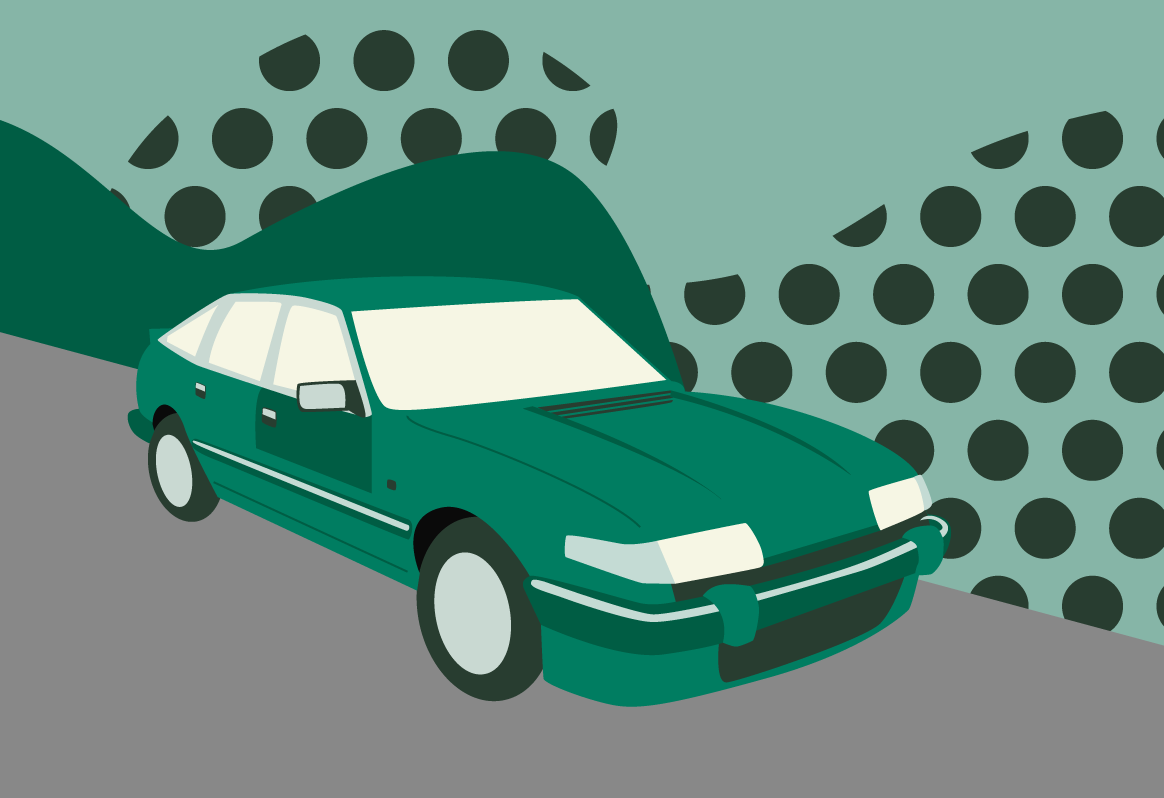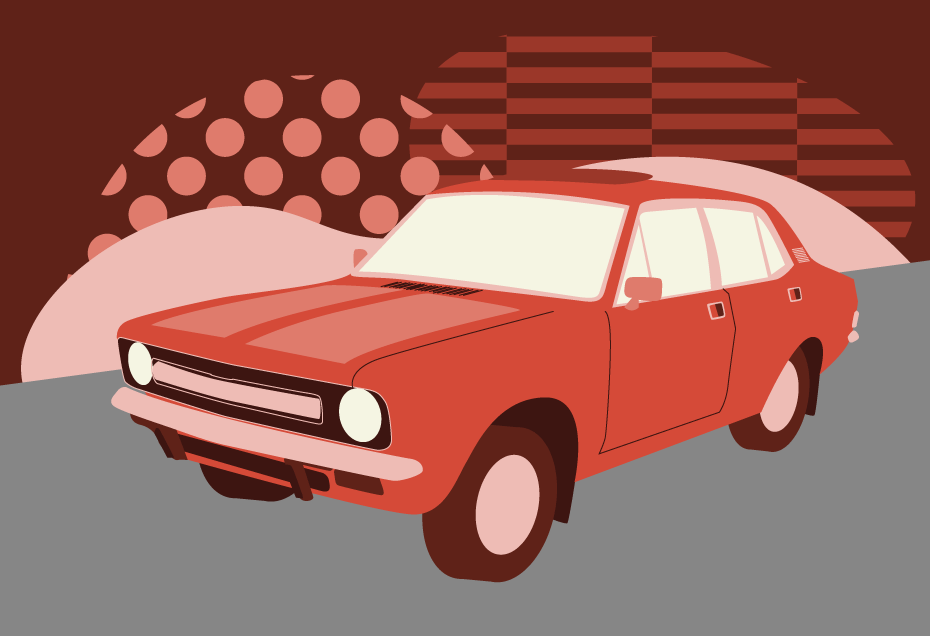The three-wheeled car was a very British phenomenon, a result of motoring laws that allowed anyone with a category A motorcycle licence to drive one.
Tamworth-based Reliant took full advantage, with the Regal, Rialto and, most famously, the Robin providing affordable car-like motoring on three wheels.
Nicknamed the ‘plastic pig’, we look at the history of the Reliant Robin as it celebrates its 50th birthday.
The Reliant Robin has suffered many indignities over its 50 years.
It’s been called the worst car ever, a dangerously unstable menace, lampooned by comedians, and is regularly called the Robin Reliant – which is like saying Escort Ford or Mini Austin.
And yet the little three-wheeler has always had an army of dedicated fans prepared to fight its corner, set the record straight, and debunk the myths.

They’ll tell you that it’s light and nimble with a peppy engine and, if driven conservatively, will return up to 60 miles per gallon.
It will also make people smile.
Most famous Reliant Robin
The most famous Robin of all, of course, wasn’t even a Robin.
Del Boy’s dilapidated yellow van in Only Fools and Horses was actually a Reliant Regal Supervan III, but that didn’t matter – many people thought, and still think, it was a Robin.

The same applies to another Regal Supervan, the driver of which has a running feud with Rowan Atkinson’s Mr Bean in his Mini.
Then there’s Brummie comic Jasper Carrott, who was never more than a few minutes from mocking the Robin in his stand up routines.
All of which helped to cement the Robin’s place in British popular culture – that there was something inherently funny, even tragicomic, about the curious little car with only one front wheel.
Jeremy Clarkson didn’t help when, in a 2010 episode of Top Gear, he drove a Robin from Rotherham to Sheffield and rolled the car half a dozen times – there was nothing funny about the three-wheeler, “it was a complete menace”, he said.

It wasn’t until six years later that he confessed to having the car’s differential doctored so it would roll over easily, adding that “I really like the Robin…it’s an absolute hoot to drive”.
Indeed, when he, James May and Richard Hammond set up their own production company, they each bought a Reliant Robin to use as company cars.
Before the Robin: Reliant Regal
To understand how the Reliant Robin came to exist, we need to look at two things – the history of Reliant Motors, and the British vehicle tax and licensing system.
Reliant was formed in Tamworth in 1935 after Tom Williams quit the Raleigh Bicycle Company, who were pulling out of the three-wheeler market, to build his own.
Williams still believed there was a future for lightweight three-wheelers, which enjoyed tax and licensing advantages over small cars.
Not only were they in the cheaper motorcycle road tax band, but they could be driven by anyone who had passed their full motorcycle test.
Williams’ first vehicle, The Reliant, a three-wheeled, 356kg light van powered by a 600cc single cylinder JAP engine, was licensed on January 1, 1935.

It was effectively an exposed motorcycle front end mounted with a box body on two rear wheels, so the motorcycle licensing seemed appropriate.
By 1937, the engine was switched to the Austin Seven’s 747cc four-cylinder unit, with Reliant developing their own version when Austin stopped Seven production in 1939.
After the war, Reliant continued producing these obviously motorcycle-derived vehicles until the more car-like Regal hit the market in 1953.
The Regal was very basic, with perspex side screens and only one windscreen wiper, its aluminium body fixed to an ash frame that was mounted to a steel box section chassis.

Development over the next few years was rapid, with four seats added in 1954 and an all-fibreglass body coming along two years later.
The Regal 3/25 of 1962 was a major step forward, a unitary construction bodyshell which, for the first time, included a fibreglass floor to replace the previous wood.

It was powered by a new all-aluminium 600cc water cooled four-cylinder OHV engine, increased to a 30hp 700cc unit in 1969.
The Regal proved hugely popular, selling 130,000 before production ended in 1973 – making it the biggest-selling three-wheeler of all time.
For a time, Reliant was the second biggest independent British car maker behind the mighty British Leyland.
Like our illustration of the Reliant Robin: the quintessentially British ‘plastic pig’ at the beginning of the article?
Download a free high-quality poster version here.
Arrival of the Reliant Robin
When it came to updating, and replacing, the Regal, Reliant had a talented team in place, including former Cooper, Lotus and BRM engineer John Crosthwaite, and design legend Tom Karen of Ogle Design, responsible for the Bond Bug, Raleigh Chopper, Bush Radio, and Reliant’s popular Scimitar sports car.
While Crosthwaite managed to engineer a well-balanced, lightweight galvanised steel chassis, Karen came up with what Autocar described as a “good-looking solution of the real problem of styling a car with three wheels and fibreglass panels”.
Reliant Robin insurance
“All told, the Robin marks a real step forward in three-wheeler design,” wrote the magazine in November 1973. “It is also an earnest of Reliant’s belief in the configuration – a belief which may be more than confirmed by the rising cost of petrol which is bound to focus attention on economical-to-operate transportation.”

The Robin was launched at the right time for small cars, with the oil crisis of 1973 sending fuel prices soaring and increasing demand for cars that can return 50+ miles per gallon.

Its 750cc, all-aluminium engine provided enough power to propel the car to 70mph, and was a popular unit for single-seat racing cars thanks to its tunability.
Members of the 750 Club used the light engine in competition as an alternative to the Austin Seven unit, and fed back valuable information to Reliant, leading to improvements in performance.
Other steps forward over the Regal were in the transmission, where, according to Autocar, “at last, the miniscule clutch movement, which was a reminder of the Austin Seven heritage, has been abolished.

“The clutch is replaced by a cable operated Borg and Beck unit with a conventional linkage, which gives smooth engagement combined with conventional pedal travel.”
There was synchro on all four forward gears, and a new selector arrangement giving more precise and positive changes, while reducing the wheels to a Mini-sized 10ins effectively lowered the car and provided better cornering and handling. An anti-roll bar was also fitted to a Reliant three-wheeler for the first time to help with stability.
The Robin came with an opening rear window and folding rear seats, giving a useful load capacity of 30 cubic feet. It also had wind down windows, carpets, proper door trims, and simple but adequate instrumentation.

Buyers could choose between four variations – the standard Robin, Super Robin, Robin estate and Robin van, ranging in price from £697 for the cheapest van to £848 for the Super Robin, which came with bumpers with overriders, fog and spot lamps, twin horns, an oil pressure gauge and battery condition indicator.
An increase in Robin power
Reliant’s 850cc engine was developed for use in the Kitten, launched in 1975 as the company’s bid to enter the general, four-wheeled, supermini market.
Engineers originally planned to use the Robin’s 750cc unit, but it wasn’t up to the job of pulling along the four-wheeler that shared the rear half of its body and chassis with the Robin.
By changing the crank and rods, the engine’s capacity could be increased to 848cc, and used to upgrade the Robin as well as power the new Kitten.

The engine featured a new SU carburettor, which replaced the old Zenith downdraught type, and power was up to 40bhp, enough to give the Robin a nippy 0-50mph time of 9.9 seconds and a top speed of 85mph.
A Super Robin would cost £1,454, more expensive than a basic Mini 850, but you would save £24 on road tax.
When the Robin was given this new, more powerful engine, Autocar finally deigned to subject a Reliant three-wheeler to a proper road test. Robin fans will wish they hadn’t…
Long before Clarkson’s stunt, motoring journalists were sceptical of the Robin’s handling.
“We have met three-wheel enthusiasts who claim they can outcorner a Mini, but our test team is more objective and unanimously concluded that the Robin’s handling fails even to approach the standards of all but one or two current four-wheel cars,” the magazine wrote.
“We had the feeling that the 850 was better than the 750 in this respect – there was less of a sensation that one dare not move the steering from the straight ahead position at maximum speed – but even so, stability was poor and the cornering limit is usually set by the tendency of the vehicle to overturn, a rare thing in four-wheelers these days.

“On poorer surfaces, the wingle front wheel can sometimes catch out the driver by developing massive understeer, causing the vehicle to swing very wide.”
The road tester acknowledged the Robin’s “sprightly performance” and fuel consumption that’s “better than average”, but could not see the logic of buying the three-wheeler over the four-wheeled and more refined Kitten for an extra £136.
“Reliant are plainly happy that such a traditional market exists for the three-wheeler, based on the idea that it is some kind of half-way house between a motorcycle and a “proper” motor car: a sort of grown up motorcycle combination perhaps. But that is strange logic for us, and on the road the Robin makes little sense.”
Buyers didn’t agree – only 4,074 Kittens were produced over seven years.
The end of the Robin?
Plans had been in place to update the Robin since the late 1970s, but instead of simply restyling the front end, Reliant opted for an entirely new design by International Automotive Design (IAD).
This larger, more wedge-shaped car was given the name Rialto, and the Robin was discontinued in 1981, although the engine, chassis and some larger components were carried over.

The Rialto, which used Ford Escort front and rear lights, was more aerodynamic than its predecessor, and therefore more stable at speed.
It came in three body styles, saloon, estate and van, and a host of trim levels including the GLS, which came with a clock, radio, cloth seats, extra-thick carpets with a carpeted boot, leather steering wheel, a spare wheel, and radial tyres.
A much-improved Rialto 2 was introduced in 1984, with a high ratio rear axle and the revised HT-E engine, which featured a yellow rocker cover.
The improvements resulted in a claimed fuel economy of 73mpg, and a new top speed of 100mph.
A Rialto SE followed in 1986, with the introduction of a hatchback that sold well.
Like our illustration of the Reliant Robin: the quintessentially British ‘plastic pig’ at the beginning of the article?
Download a free high-quality poster version here.
Return of the Robin
In 1989, the Robin was back with a completely new hatchback body, and sold alongside the Rialto.
Estate and van versions came later, while the top of the range trim levels were the BRG (British Racing Green) and Royale models, which retailed for more than £9,000.

The Mk2 Robin ran for 10 years until a completely revised front end with teardrop-style headlamps (from the Vauxhall Corsa) was introduced for 1999.
There were new doors and a new tailgate, but the car was still powered by the same 848cc light-alloy engine.

By now, Reliant manufacture had moved from Tamworth to Burntwood, and trouble was brewing for the carmaker, which had changed hands several times over the years.
In September, 2000, the company announced that no more Reliant three-wheelers would be made after February 2001.
Shareholders had decided to import Ligier microcars and Piaggio Ape three-wheelers instead of continuing Robin production, and it was announced that the car would bow out with 65 special edition cars to mark 65 years of three-wheeler production.
The Robin 65 featured metallic gold paint, leather trim, a walnut dash, alloy wheels, a stainless steel exhaust, and a numbered plaque on the dashboard with an engraving of the original owner’s name.

The very last Reliant Robin was given away as a competition prize in The Sun newspaper on Valentine’s Day 2001.
Although it wasn’t quite the end…
Another revival – the BN Robin
Within two months of the Robin’s demise, Suffolk-based B&N Plastics acquired the rights to produce a new version of the three-wheeler.
The licensing deal involved Reliant supplying the mechanical parts of the Robin to B&N, who would then produce the fibreglass bodies, put it all together and sell up to a maximum of 250 cars a year.
The BN-1 Robin was based on the Robin 65, including all the extras of the original, but with a completely redesigned interior, and re-engineered gearbox and axle.

A BN-2 Robin was an even higher spec, with special light reactive paint, a CD player and electric windows, a first for a Robin.
So far so good, but with Reliant deciding to end production of the 850cc engine and therefore unable to supply the mechanical parts, B&N production ground to a halt with only 40 or so cars complete.
Having already invested significantly to get the Robin into production, more funds would be needed to adapt the car to a different engine if production were to continue.
By early 2002, no investors had come forward, and B&N Plastics ended car production with orders unfulfilled.
It was, finally, the end of the Robin after nearly 30 years of on-off production.
Love it, hate it, or laugh at it, it’s impossible to deny that the Reliant Robin is a British icon.






